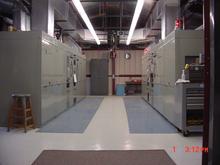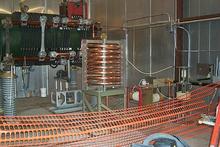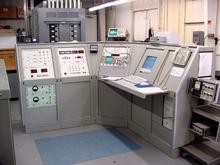The Story of an Old Timer: New Transmitters
Throughout the 1960s, 1970s and 1980s, disciplined oscillators were manufactured receiving the WWVB signal and delivering better than 1 part in 10" stability. But the signal was difficult to receive except with large antennas.
In the early 1990s Germany's DCF77 and England's MSF broadcast had spawned an industry of radio receive clocks and watches with small antennas. So it was decided to upgrade WWVB by using both antenna arrays at the same time to broadcast at a higher power than the existing and aging 13 kW signal. New transmitters were obtained from Navy surplus. New helix house equipment was installed to handle the higher power. And new control units were installed.
By August 1999, the upgraded WWVB was fully operational at 50 kW and soon bumped up to 70 kW.



This led to an explosion of radio receiving clocks and watches being sold. By 2010 it was estimated that over one million units were being sold every year. However, it did have problems. Daytime propagation was limited due to ionospheric effects. But the biggest problem was interference along the East coast from England's 60 kHz broadcast from Rugby. Because of these problems these remained novelty clocks and watches and we wanted it to be original equipment manufacturing.
Contacts
-
(303) 497-3212
-
PML webmaster

